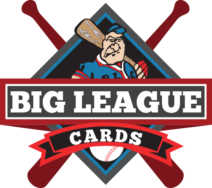Inside the Pack: Rarity vs. Desirability
A topic that often comes up when discussing sports cards is rarity. For as long as collecting has been an activity, rarity has been a major driving force of its value. If something is hard to find, then it should stand to reason that the price would be high.
But seasoned collectors know that is not always the case. Rarity is just one factor in determining an item’s value. The other factor is desirability. This is a simple high school economics lesson on supply and demand. It doesn’t matter how rare an object is if no one else wants it. I could name any number of examples, but the most recent and fresh one in my memory is a Mikel Leshoure printing plate I recently sold for $4. Depending on how you view printing plates, it is either the only card like it or one of four cards like it. Either way, it’s rare, but worth next to nothing because no one really collects his cards.
The converse is also true: just because something is not rare doesn’t mean it’s not valuable. I often use diamonds as an example of this. Diamonds are plentiful, but because there is a strong demand for them and no shortage of people wanting them in jewelry, the price remains strong. It’s relatively easy to find diamonds to buy: walk into any jewelry store, pawn shop, department store, and so on. However, it’s relatively difficult for a regular person to go out and and find their own raw diamond which has not been discovered by someone else already.
This was the crux of a discussion I found myself engaged in on Twitter recently. A user asked what people thought it was the most overvalued card in the hobby and to my surprise, the response was overwhelmingly the 2011 Topps Update Mike Trout rookie. I was shocked. In my opinion, is the card overvalued? Absolutely. But the MOST overvalued card in the hobby? Not even close.
I don’t have an answer to the question, but I know it’s not Mike Trout’s rookie. Trout has suddenly gained a reputation as being injury prone despite this being the first season in which he ever missed serious time. His team’s lack of postseason success doesn’t make him look good, but no one seems to hold that against Ted Williams or Ernie Banks, or their respective rookie cards.
One of the arguments one account was making is that, as a modern card, there are so many of the Trout Updates it can’t possibly be worth what it’s worth. This is where thinking about rarity versus desirability comes in.
Collectors may be surprised to learn that, in the scheme of modern cards, there actually aren’t that many Trout Updates. According to PSA, there are 10,545 total PSA-graded examples of the card, with 5,519 graded a perfect 10. Among examples graded by Beckett, there are 6,599 total, with 4,229 earning a 9.5, 228 earning a 10, and 26 carrying the Pristine 10 black label designation. All in all, this results in a total of 16,877 total Trout Updates between BGS and PSA.
It sounds like a lot, but again: for a modern card, especially the most popular card of the 2010s and one of the most popular cards of all time, it really isn’t. To wit: a 2020 Topps base rookie of Kyle Lewis, who won the rookie of the year but hasn’t done much else, has 11,982 graded copies at PSA alone, despite having had 9 fewer years and way less of a reason to see copies get graded. The 2019 Topps Fernando Tatis Jr. rookie — an important card of one of the best and most exciting players in the game, albeit one who has just a few years under his belt — has a whopping 27,556 graded copies at PSA alone, with almost as many copies earning a PSA 10 (16,130) as there are total copies of Trout Updates at both PSA and BGS combined.
Think maybe I’m comparing apples to oranges since I’m looking at a card that shows up in a factory set (Tatis) as opposed to one that doesn’t (Trout)? Let’s take another popular Update card then. The 2018 Topps Update Ronald Acuna Jr. — just the standard version, none of the variations — has a total population of (brace yourself) 30,122 at PSA, including 19,406 10s. There are another 3,363 Acuna cards graded at BGS, too. And again, take into account the 7 fewer years this card has had to be graded.
Put simply, 2011 Topps Update was not produced in the same quantity as many other modern products were. In addition to everything else noted above, it’s worth noting that there is still tons of unopened product for most recent sets, like 2018 Topps Update and 2020 Topps Series 1. Not so for 2011 Topps Update. Like a diamond, it’s nearly impossible for a regular person to go off and find a new undiscovered Trout rookie that hasn’t already been pulled. Meanwhile, demand for the flagship RC of the greatest player of his generation remains strong. Overvalued is certainly a possibility. But the “most overvalued” is not a befitting title when demand for this card so far outpaces supply.




